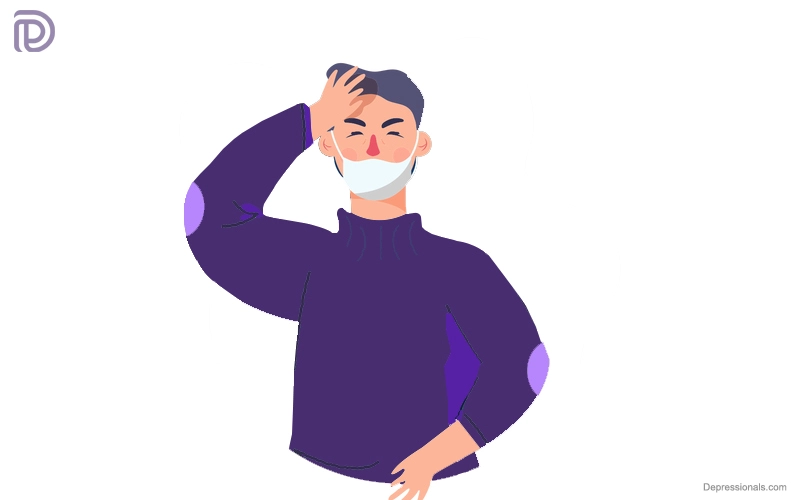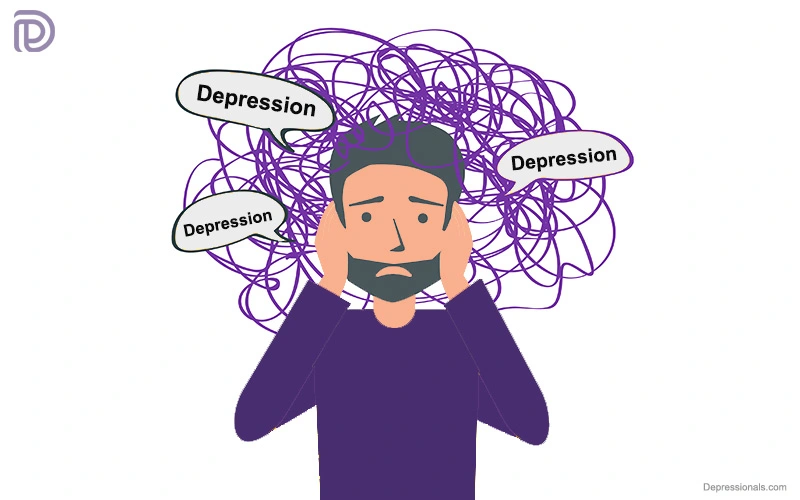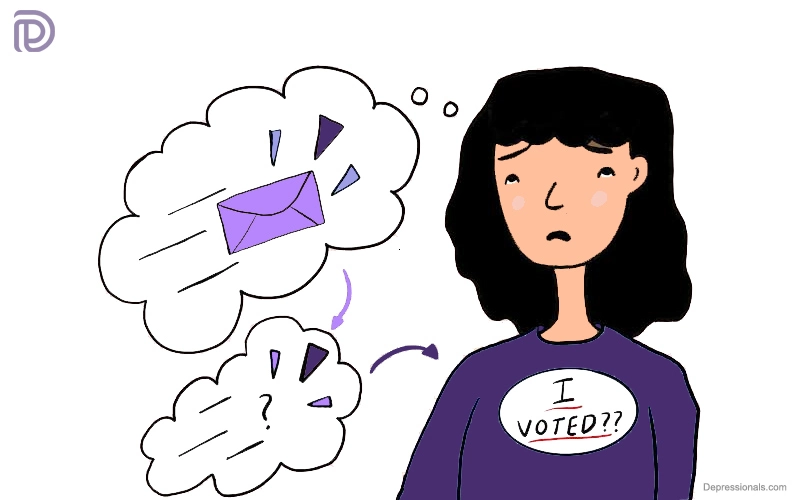Many people around the globe have experienced sadness and depression at one time or another. It is important to recognize the difference between a depression diagnosis and feelings of sadness as this will enable a person to deal with both in a healthy manner.
Sadness is an emotion that we all experience from time to time in our lives. It is normal to feel sad when something emotionally upsetting or traumatic has occurred. The level of sadness varies from person to person. It usually fades over time, however, like all emotions. Depression differs from sadness in this way.
An illness that lasts longer is depression. People with depression have problems socially, occupationally and otherwise. Depressive symptoms may not go away until they are treated.
Learn the differences between sadness and depression by reading on.
Read: Work Depression
Understanding the difference
Understanding what sadness and depression are is crucial for improving wellbeing.
Sadness
People experience sadness at somber or stressful times as a normal human emotion.
Various life circumstances can cause sadness or depression. All of these factors can have a negative effect on mood, such as the loss of a loved one, divorce, losing a job or income, financial difficulty and home issues.
Being let down by life can also trigger sadness, whether it’s finishing an exam, failing a job interview, or experiencing another disappointing event.
However, people suffering from sadness can often find relief through crying, venting, or speaking out their frustrations. It is common for sadness to be linked to a specific trigger or event.
The feeling usually dissipates over time. It is possible that this will not pass, or that the person may not be able to resume normal function.
People with low moods who last for more than two weeks should speak with their doctor.
Read: Stressful Work Environment
Depression
There are many aspects of a person’s life that are affected by depression. Individuals of any age or gender may suffer from it, and it affects their behavior and attitudes.
A total of 16.1 million Americans aged 18 or older experienced a major depressive episode within the last year, which represents 6.7 percent of all adults in the country.
Some of the symptoms include:
- A sense of discouragement
- Sadness
- Hopelessness
- No motivation
- Disinterest in previously enjoyable activities
Suicidal thoughts or attempts may occur in severe cases. The lack of time with family or friends and the inability to attend work or school might make them no longer want to spend time with their friends and family.
Symptoms of major depression (MDD) may be diagnosed if the feelings of doubt last longer than two weeks.
This condition is characterized by:
- There is a constant feeling of sadness and hopelessness, lasting nearly throughout the day nearly every day
- It becomes increasingly difficult to pursue normal activities
- There is a significant loss or gain of weight
- Sleepiness, insomnia, or excessive sleep that impacts normal schedules
- Low energy and fatigue
- Overwhelming guilt or feelings of worthlessness
- Problems with concentration and decision-making
- Suicidal thoughts, attempts, or plans to commit suicide
If a person experiences one, two, three, or five of these symptoms for more than two weeks, they may be experiencing a medical problem rather than sadness.
MDD can be diagnosed only if the symptoms are linked to depression, and not to any other medical condition or substance abuse.
When a person is depressed, he or she may find it difficult to get through the day. It is not just sadness that leads to depression.
Read: Depression and Divorce
Symptoms
Sometimes, sadness can feel all-encompassing. It is also important to have moments of laughter or comfort. There are differences between depression and sadness. All aspects of your life will be affected by your emotions. Your enjoyment of activities and people you used to enjoy may be difficult or even impossible to find. Depressive disorders are mental illnesses, not emotions.
Depression may present with symptoms such as:
- Sadness is constant
- Irritability
- Fatigue
- Disturbances in sleep or eating habits
- Concentration problems
- Disinterest in things that were once pleasurable
- Unjustified guilt
- Physical symptoms without an identifiable cause, such as headaches or body aches
- An overwhelming sense of worthlessness
- An overwhelming sense of death
- Considerations or actions leading to suicide
Symptoms of sadness can include some of these, but they shouldn’t last longer than two weeks. The most common sign of depression is suicidal thoughts.
Read: Difference Between Stress and Anxiety
DSM-5 criteria guide
In order to determine if someone is sad or depressed, mental health professionals use the Diagnostic and Statistical Manual of Mental Disorders (DSM-5) guidelines from the American Psychiatric Association. When you meet the criteria for depression or persistent depressive disorder, you may receive a diagnosis.
There are nine potential depression symptoms listed in the DSM-5 criteria. An important part of the diagnostic process includes weighing the severity of each symptom. Here are nine symptoms to consider:
- Feeling depressed most of the time or every day
- Not enjoying activities that you once found enjoyable
- Sleeping too much or having problems sleeping
- Having trouble eating, or eating excessively, followed by gaining or losing weight
- Being restless, irritable or agitated
- Excessive fatigue
- Feelings of guilt or worthlessness that are unreasonable or exaggerated
- Problems making decisions or concentrating
- Thoughts or actions that are suicidal, like thinking too much about death and dying
Risk factors
It is possible for both men and women to suffer from depression at any age. This condition affects people from all socioeconomic and racial groups.
Depression can be caused by a number of factors. However, there is no guarantee that you will become depressed just because you have one or more risk factors. Some risk factors are:
- Trauma from childhood or adolescence
- Any situation that leads to extreme levels of pain, like the death of a child or spouse, makes you unable to deal with a devastating life event
- Low self-esteem
- Mental illness in family members, including bipolar disorder and depression.
- Drug and alcohol abuse in the family
- Neither family nor community accepts lesbians, gays, bisexuals, or transgenders (LGBT)
- Problems coping with chronic illness, such as cancer, stroke or chronic pain
- Traumatic injury, such as losing a limb or paralysis, can lead to difficulty adapting to body changes
- Previous mental health disorders, such as anorexia, bulimia, post-traumatic stress disorder (PTSD) or anxiety disorder
- An absence of friends, family, or co-workers as a support system
Some medications can also cause depression as a side effect. Discuss your drug usage with your doctor if you are worried it may affect your mood. Here are a few medications that may worsen your depression:
- Beta-blockers
- Corticosteroids
- Hormonal medications
- Cholesterol-lowering drugs such as statins
Read: Broken Heart Syndrome
Diagnosis
Several diagnostic tools will be used by your doctor to help distinguish sadness from depression. Depending on your doctor’s DSM-5 criteria, he or she will ask you a series of questions or have you complete a questionnaire. These questions will help identify if you’re feeling down.
Additionally, they will want to know what symptoms you are experiencing. Their questions will focus on your feelings and what your day-to-day routine looks like.
A physical examination may be performed by your physician as well. It will allow them to determine whether you have any underlying health issues. An underactive thyroid (hypothyroidism) can be detected through a blood test.
What is the best time to seek help?
If you are experiencing sadness for more than two weeks, speak to your doctor. If you are experiencing suicidal thoughts, contact the emergency services right away.
Take note if your feelings prevent you from functioning, participating in life, and experiencing enjoyment. The first step toward recovery can often be talking to a professional, such as your therapist, clergy member, or another trusted individual.
Read: How to Deal with Frustration
Treatment
You can improve your mood by making a few minor lifestyle changes.
- Engage in social activities. Alternatively, you can join a knitting circle, jogging club, or yoga class to relieve stress and tension
- Find something you enjoy doing every day
- You can watch or read a funny television show or movie
- Engage in sport or physical activity
- Spend time with a furry friend every day if you love animals
- Avoid self-medicating with drugs and alcohol
- Get enough rest and eat a healthy diet
- Take a warm bath before you go to bed if you’re having trouble sleeping
- Reduce your stress level
When you’re suffering from depression, you may also benefit from lifestyle changes. Nonetheless, those changes might not be enough. An experienced psychologist can help you if you are depressed. Psychotherapy is another term for this type of treatment.
A hospital or therapeutic setting can provide inpatient care to people who are depressed or suicidal.
You may need medication prescribed by your physician or therapist. Different antidepressants are available. It is up to you and your physician to decide which one you should take. There are many factors to consider, including your age, family history and allergies.
If you have trouble finding the right treatment plan, you may have to try several different ones. Suicidal thoughts may be exacerbated by antidepressants. If you experience worsening depression, you need to tell your doctor right away.
Read: Economic Stress
Bottom line
Being proactive and changing your lifestyle might help you if you’re going through a time of sadness. Talking to a professional may also be helpful if you feel it would be helpful. Medication can also be helpful if it would be helpful.
Depression can be treated. However, lifestyle changes can’t necessarily help you recover. There’s a good chance you’ll need therapy as well. It is possible that you will also have to take medications.
Make sure you get the help you require. Consider finding someone who will be willing to take that step with you if you are unable to take that step on your own. Perhaps you can speak to your family physician about this. Your first appointment with a therapist may be best attended by a friend or family member. Whatever you may be feeling today, healing and hope are within reach.
Takeaway
It takes effort to overcome sadness and depression. If you’re seeing a therapist, make sure you keep your appointments. Make sure you let him or her know what’s going on. Other ways to cope with depression and sadness are listed below:
- Make a habit of waking up at the same time every morning. Making time for self-care as part of a routine can help you manage your life better.
- Take part in physical activity. Exercise boosts mood and improves health.
- Try not to isolate yourself. Try to talk to someone you like at least once a day, either in person or over the phone.
- Try new activities you’re interested in, or return to activities you enjoyed previously. You’ll feel better if you look forward to new activities.






Hello, I think your website might be having browser compatibility issues. When I look at your website in Ie, it looks fine but when opening in Internet Explorer, it has some overlapping. I just wanted to give you a quick heads up! Other then that, superb blog!
These kinds of posts are always inspiring and I prefer to check out quality content so I’m happy to finally find many excellent points here in the post, writing is simply great, thank you for the post